Vassilios Morellas
From Human Hands to Robotic Limbs: A Study in Motor Skill Embodiment for Telemanipulation
Feb 04, 2025Abstract:This paper presents a teleoperation system for controlling a redundant degree of freedom robot manipulator using human arm gestures. We propose a GRU-based Variational Autoencoder to learn a latent representation of the manipulator's configuration space, capturing its complex joint kinematics. A fully connected neural network maps human arm configurations into this latent space, allowing the system to mimic and generate corresponding manipulator trajectories in real time through the VAE decoder. The proposed method shows promising results in teleoperating the manipulator, enabling the generation of novel manipulator configurations from human features that were not present during training.
Learning Log-Determinant Divergences for Positive Definite Matrices
Apr 13, 2021



Abstract:Representations in the form of Symmetric Positive Definite (SPD) matrices have been popularized in a variety of visual learning applications due to their demonstrated ability to capture rich second-order statistics of visual data. There exist several similarity measures for comparing SPD matrices with documented benefits. However, selecting an appropriate measure for a given problem remains a challenge and in most cases, is the result of a trial-and-error process. In this paper, we propose to learn similarity measures in a data-driven manner. To this end, we capitalize on the \alpha\beta-log-det divergence, which is a meta-divergence parametrized by scalars \alpha and \beta, subsuming a wide family of popular information divergences on SPD matrices for distinct and discrete values of these parameters. Our key idea is to cast these parameters in a continuum and learn them from data. We systematically extend this idea to learn vector-valued parameters, thereby increasing the expressiveness of the underlying non-linear measure. We conjoin the divergence learning problem with several standard tasks in machine learning, including supervised discriminative dictionary learning and unsupervised SPD matrix clustering. We present Riemannian gradient descent schemes for optimizing our formulations efficiently, and show the usefulness of our method on eight standard computer vision tasks.
Learning Discriminative Alpha-Beta-divergence for Positive Definite Matrices (Extended Version)
Aug 05, 2017



Abstract:Symmetric positive definite (SPD) matrices are useful for capturing second-order statistics of visual data. To compare two SPD matrices, several measures are available, such as the affine-invariant Riemannian metric, Jeffreys divergence, Jensen-Bregman logdet divergence, etc.; however, their behaviors may be application dependent, raising the need of manual selection to achieve the best possible performance. Further and as a result of their overwhelming complexity for large-scale problems, computing pairwise similarities by clever embedding of SPD matrices is often preferred to direct use of the aforementioned measures. In this paper, we propose a discriminative metric learning framework, Information Divergence and Dictionary Learning (IDDL), that not only learns application specific measures on SPD matrices automatically, but also embeds them as vectors using a learned dictionary. To learn the similarity measures (which could potentially be distinct for every dictionary atom), we use the recently introduced alpha-beta-logdet divergence, which is known to unify the measures listed above. We propose a novel IDDL objective, that learns the parameters of the divergence and the dictionary atoms jointly in a discriminative setup and is solved efficiently using Riemannian optimization. We showcase extensive experiments on eight computer vision datasets, demonstrating state-of-the-art performances.
Video Human Segmentation using Fuzzy Object Models and its Application to Body Pose Estimation of Toddlers for Behavior Studies
May 29, 2013

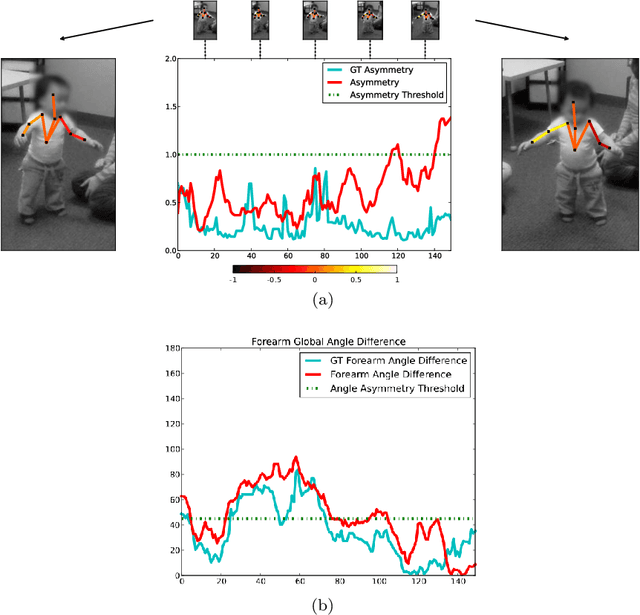

Abstract:Video object segmentation is a challenging problem due to the presence of deformable, connected, and articulated objects, intra- and inter-object occlusions, object motion, and poor lighting. Some of these challenges call for object models that can locate a desired object and separate it from its surrounding background, even when both share similar colors and textures. In this work, we extend a fuzzy object model, named cloud system model (CSM), to handle video segmentation, and evaluate it for body pose estimation of toddlers at risk of autism. CSM has been successfully used to model the parts of the brain (cerebrum, left and right brain hemispheres, and cerebellum) in order to automatically locate and separate them from each other, the connected brain stem, and the background in 3D MR-images. In our case, the objects are articulated parts (2D projections) of the human body, which can deform, cause self-occlusions, and move along the video. The proposed CSM extension handles articulation by connecting the individual clouds, body parts, of the system using a 2D stickman model. The stickman representation naturally allows us to extract 2D body pose measures of arm asymmetry patterns during unsupported gait of toddlers, a possible behavioral marker of autism. The results show that our method can provide insightful knowledge to assist the specialist's observations during real in-clinic assessments.
Computer vision tools for the non-invasive assessment of autism-related behavioral markers
Nov 08, 2012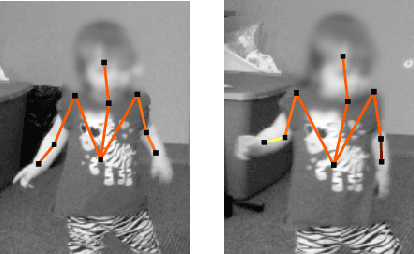
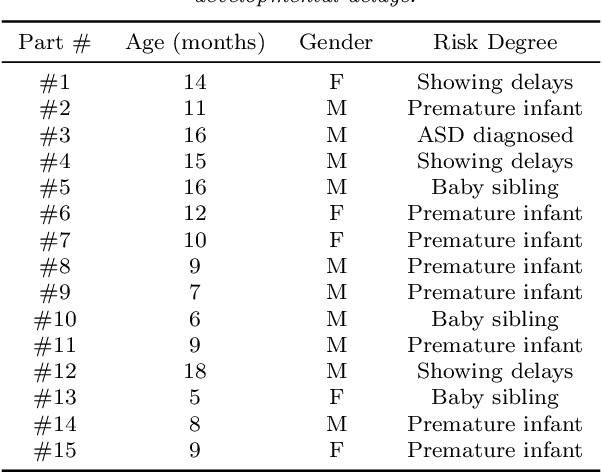
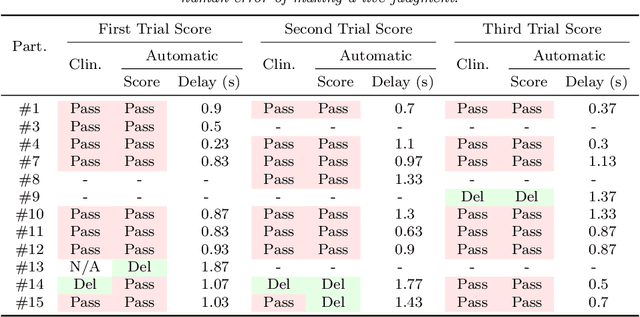
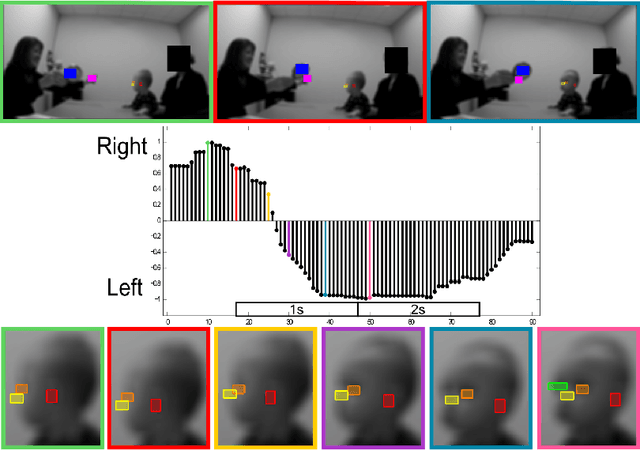
Abstract:The early detection of developmental disorders is key to child outcome, allowing interventions to be initiated that promote development and improve prognosis. Research on autism spectrum disorder (ASD) suggests behavioral markers can be observed late in the first year of life. Many of these studies involved extensive frame-by-frame video observation and analysis of a child's natural behavior. Although non-intrusive, these methods are extremely time-intensive and require a high level of observer training; thus, they are impractical for clinical and large population research purposes. Diagnostic measures for ASD are available for infants but are only accurate when used by specialists experienced in early diagnosis. This work is a first milestone in a long-term multidisciplinary project that aims at helping clinicians and general practitioners accomplish this early detection/measurement task automatically. We focus on providing computer vision tools to measure and identify ASD behavioral markers based on components of the Autism Observation Scale for Infants (AOSI). In particular, we develop algorithms to measure three critical AOSI activities that assess visual attention. We augment these AOSI activities with an additional test that analyzes asymmetrical patterns in unsupported gait. The first set of algorithms involves assessing head motion by tracking facial features, while the gait analysis relies on joint foreground segmentation and 2D body pose estimation in video. We show results that provide insightful knowledge to augment the clinician's behavioral observations obtained from real in-clinic assessments.
 Add to Chrome
Add to Chrome Add to Firefox
Add to Firefox Add to Edge
Add to Edge